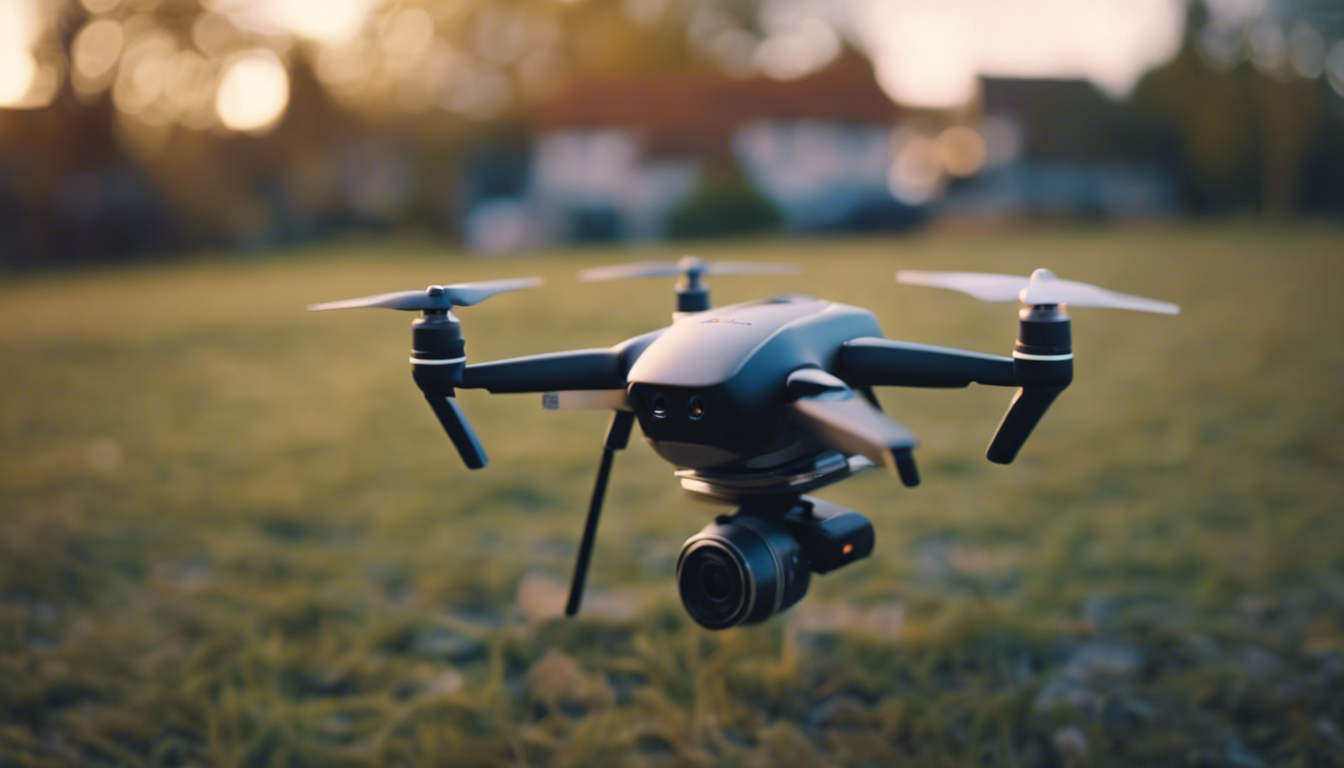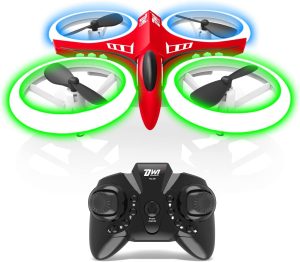
Types and Features of Popular Consumer Drones
Imagine a gadget that can soar into the skies, capture stunning aerial footage, and even race through a park at heart-pumping speeds. Yes, we’re talking about consumer drones, and they’re as diverse as they are exciting. Whether you are a photography enthusiast or an adrenaline junkie, there’s a drone out there that is tailored just for your kind of adventure.
Let’s start with the mini drones. These palm-sized whisperers of the sky are perfect for indoor fun. They zip and zag with surprising agility, making them ideal for beginners or anyone looking to pilot without making a big investment. And some even come with cameras, though don’t expect cinema-quality footage from these little buzzers.
Step up into the realm of camera drones and things start getting serious. Equipped with high-resolution cameras and stability features like gimbals, these are the go-to for anyone looking to capture crisp videos and stills from above. A popular feature among these flying cameras is the ‘follow me’ mode, where your drone becomes your personal filmmaker, autonomously following your every move. It is like having your own paparazzi, only you’re in control!
For the speed demons, racing drones will get your heart racing. These are not your leisurely sightseeing drones; they’re built for speed and agility, often used in competitive racing events. With the ability to customize and tweak to your heart’s content, these drones are for those who feel the need for speed. And yes, they do crash spectacularly, but isn’t that part of the thrill?
Now, let’s not ignore the feature-rich drones that come loaded with everything from obstacle avoidance to autonomous flight patterns. Some even boast features like lossless zoom, panoramic photography modes, and thermal imaging for the more specialized applications. And if you’re worried about piloting, these drones often offer advanced controls with intuitive interfaces, making them less daunting for the newbie flyers out there.
And for those who dread the thought of their precious drone running out of juice mid-flight, battery life is something manufacturers have been tirelessly improving. Long gone are the days of sub-10-minute flights. Now, many consumer drones offer flight times that extend beyond the half-hour mark, allowing for more exploration and fun before needing a pit stop.
In a nutshell, consumer drones are no longer just the stuff of sci-fi. They are real, accessible, and come packed with features that cater to a wide range of interests and skill levels. From pocket-sized flyers for impromptu indoor derbies to high-flying aerial photographers — the sky is literally the limit when it comes to these amazing machines.
Applications and Uses for Hobbyist Pilots
Now, if you thought drones were just for capturing your friend’s outdoor wedding or snapping breathtaking selfies from angles no selfie stick could ever achieve, buckle up! There’s a whole universe of applications for our hobbyist pilots that make drones just short of magical. Welcome to the playground where imagination takes flight alongside these incredible machines.
Think the thrill of drone racing, a sport that has surfaced from the depths of hobby basements to national television. Picture this: dozens of drones, piloted by ultra-focused hobbyists, darting through obstacle courses that look like they’ve come straight out of a sci-fi movie. It’s high-speed competition that combines piloting skill with the rush of racing. And no need to daydream about it; with a racing drone and a pair of first-person-view (FPV) goggles, you could be the next star pilot of the drone racing world.
But it’s not all about the adrenaline. Many drone enthusiasts find solace in the tranquillity of nature photography. Imagine soaring over a scenic coastline or following a mountain ridge at dawn. There’s a harmonious blend of technology and nature as hobbyist pilots capture images and videos once reserved for professional filmmakers with helicopter budgets.
With the right drone, you could be documenting wildlife patterns without disturbing a single creature or crafting a mesmerizing time-lapse of a bustling cityscape as day turns to night.
And then there’s the practicality of everyday life where drones are swiftly fitting in. Those with an eye for architecture might deploy their drones for inspecting hard-to-reach structures, while avid gardeners could enjoy a bird’s-eye view of their landscapes to better plan their beautiful backyards.
Thanks to the advanced features that many consumer drones now possess, such as pre-programmed flight paths and object tracking, the realm of possibility extends even further. Budding filmmakers, for instance, can create sophisticated aerial shots with a smoothness and precision that rivals professional footage. Drones can follow their subject or even navigate complex trajectories, adding dynamic range to any video project.
And let’s not forget those who fly for the sheer joy of it, engrossed in the unique perspective from above and the freedom of navigating the skies. Pilots can engage in leisurely exploration, perhaps discovering new vantage points in their local area or capturing festivities from above during community events and celebrations. It is a social activity too, with clubs and groups bringing together like-minded enthusiasts to share tips, tricks, and, of course, bragging rights for the best aerial shot!
But the fun doesn’t stop when the sun sets. For the night owls, nocturnal flights can be enchanting with drones equipped with LED lights, illuminating their path and creating light art in the dark canvas of the night sky.
In a world that often seems to have shrunk within the confinements of conventional hobbies, drones blast the doors wide open. They are not just flying gadgets; they are creators of community, enhancers of creativity, and tools that break barriers. They invite hobbyists to consider outside the box and, quite literally, reach for the sky. So, whichever way you flip it, drones are shaping up to be the Swiss Army knives of the sky for hobbyists around the globe.
Safety and Regulatory Guidelines for Drone Operation
While drones do indeed open up a sky-high realm of possibilities, they also come with a firm set of safety and regulatory guidelines that every pilot must adhere to, ensuring that the skies stay friendly for everyone. It’s a balance between freedom and responsibility, where understanding the rules is just as crucial as learning to pilot your drone.
The most important aspect for any drone operator to grasp is the regulations set forth by their country’s aviation authority. In the United States, for example, the Federal Aviation Administration (FAA) lays out the law of the land – or rather, the law of the sky – for drones, which includes the necessity for hobbyist pilots to register their flying machines if they weigh over 0.55 pounds. And yes, there’s even an app for that, making compliance a breeze.
Once registered, the world above might seem like an infinite playground. However, the FAA also delineates no-fly zones, which include areas around airports, military bases, and national parks. To keep the airspace safe, drones are typically prohibited from flying above 400 feet, ensuring they don’t stray into the path of manned aircraft.
Did you know that there’s an FAA guideline that explicitly prohibits dropping objects from your drone that could cause harm or disturb the peace? So, unfortunately, no delivering your neighbor’s borrowed garden shears back via drone.
When it comes to maintaining visual line-of-sight, it’s not just a suggestion, it’s the law. You need to keep your drone in view at all times without the use of binoculars, and for good reason – this ensures you can react swiftly to any unexpected obstacles or emergencies.
But what about those fancy FPV goggles that let you see what this drone sees? While they make for an immersive experience, they don’t replace the requirement for a visual line-of-sight. In fact, if you’re using FPV, regulations typically state that a second person – a spotter – must be present to keep an eye on the drone from takeoff to landing.
Let’s not forget about privacy concerns, either. Drones might be great for capturing those high-flying shots, but snooping over someone’s backyard without permission is a definite no-no. Pilots need to respect individuals’ privacy and refrain from actions that could be seen as invasive or disruptive – remember, with great power (or great altitude) comes great responsibility.
And when accidents happen – because let’s face it, no one is perfect – reporting any collisions with other aircraft, person, or property damage exceeding 0 is not just courteous; it’s required by the FAA. It’s all about accountability and ensuring the skies are safe for everyone.
For those who find themselves overwhelmed by all the rules, community-based organizations offer resources and programs to help hobbyists navigate the do’s and don’ts of drone flying. These groups are a treasure trove of guidance, providing everything from safety courses to tips on piloting etiquette.
So, while your drone might feel like a liberated bird, there’s an invisible leash of laws that need to be respected. It might not be the Wild West of the skies that some dream of, but these regulations maintain a balance that protects everyone – and keeps our state-of-the-art cowboys, the hobbyist drone pilots, in check.
In essence, flying a drone is not so different from driving a car. There’s a license involved (or at least registration), rules of the road (or air), and a sense of public duty to operate your vehicle safely. It’s about embracing the freedom of flight while ensuring that everyone else can enjoy that same freedom, unencumbered and safe from aerial mishaps.
